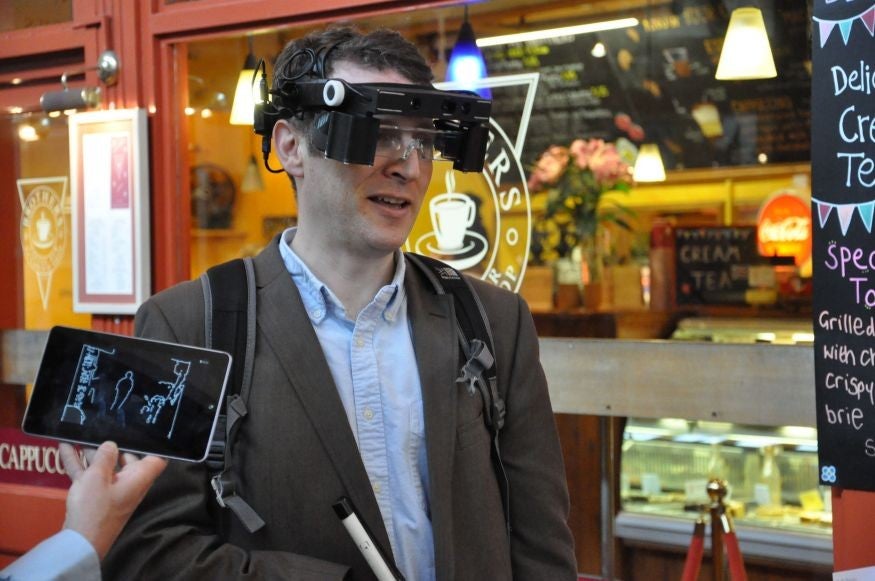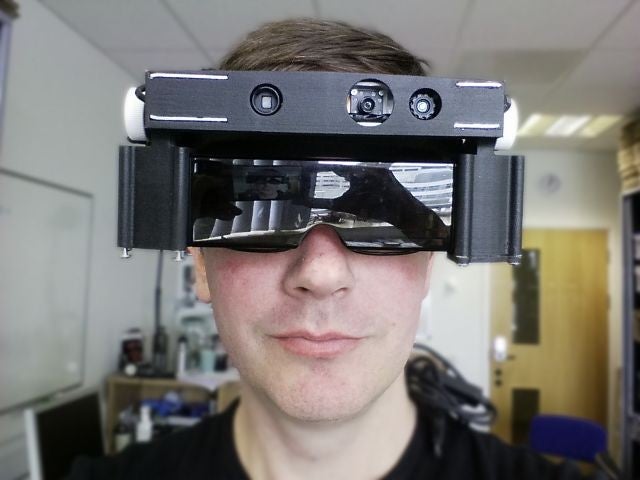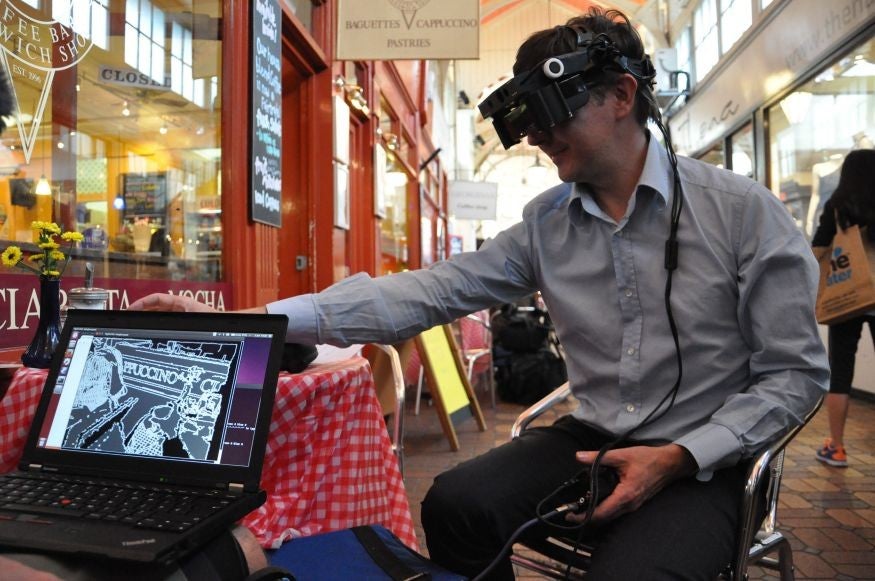Smart glasses help the visually impaired 'see'
New protoype using infra-red cameras and real-time image processing has let legally blind individual see their guide dogs for the first time

Your support helps us to tell the story
From reproductive rights to climate change to Big Tech, The Independent is on the ground when the story is developing. Whether it's investigating the financials of Elon Musk's pro-Trump PAC or producing our latest documentary, 'The A Word', which shines a light on the American women fighting for reproductive rights, we know how important it is to parse out the facts from the messaging.
At such a critical moment in US history, we need reporters on the ground. Your donation allows us to keep sending journalists to speak to both sides of the story.
The Independent is trusted by Americans across the entire political spectrum. And unlike many other quality news outlets, we choose not to lock Americans out of our reporting and analysis with paywalls. We believe quality journalism should be available to everyone, paid for by those who can afford it.
Your support makes all the difference.Researchers from Oxford University have created a pair of ‘smart glasses’ that allow severely visually impaired individuals to ‘see’ again.
The technology amplifies wearer's residual sight by combining video from a pair of normal and infra-red cameras, processing these images in real time and projecting hem onto the glasses’ lens.
Individuals who have tested the prototype reported massive improvements in their vision, with one wearer, 70-year-old Lyn Oliver, able to navigate a busy covered market without assistance.
Oxford University’s Dr Stephen Hicks, one of the leads on the project, told the BBC: “If you're walking around you're able to navigate doorways, and see hazards on the floor that might trip you up. So you can become more independent and walk around with greater ease."

Dr Hicks said that people “loved” the glasses: “They remark how much they can see now,” he said. “They can see details in faces, they can see their own hands. People have commented how they've seen their guide dog for the first time. It's a real enabler."
The invention could help the nearly 100,000 UK citizens who are registered as blind but can still see light as a smudgy and indistinct blur on their vision. The Royal National Institute of Blind People described the glasses as “incredibly important”.
The glasses are currently bulky and rely on an attached computer stored in a backpack to process the images, but researchers are hoping that the technology will be miniaturized swiftly. Scientists are hoping that they can bring the cost of the device down to that of a mobile phone and are planning to create a first batch of 100 sets before the end of the year for further research.

Iain Cairns, 43, also tested out the device, describing the experience as “having a sixth sense, an extra superpower – knowing where to look and pick out objects. It’s very exciting.
He added that the combination of cameras built into the glasses creates an image similar to the famous sketch-effects of a-ha’s ‘Take On Me’ music video.
“I can see your face,” said Cairns to journalists. “It’s […] like the Lord of the Rings when he puts the ring on and sees things in a new way. That tablecloth is looking lovely. It’s getting the pattern of the tablecloth.”
Join our commenting forum
Join thought-provoking conversations, follow other Independent readers and see their replies
Comments